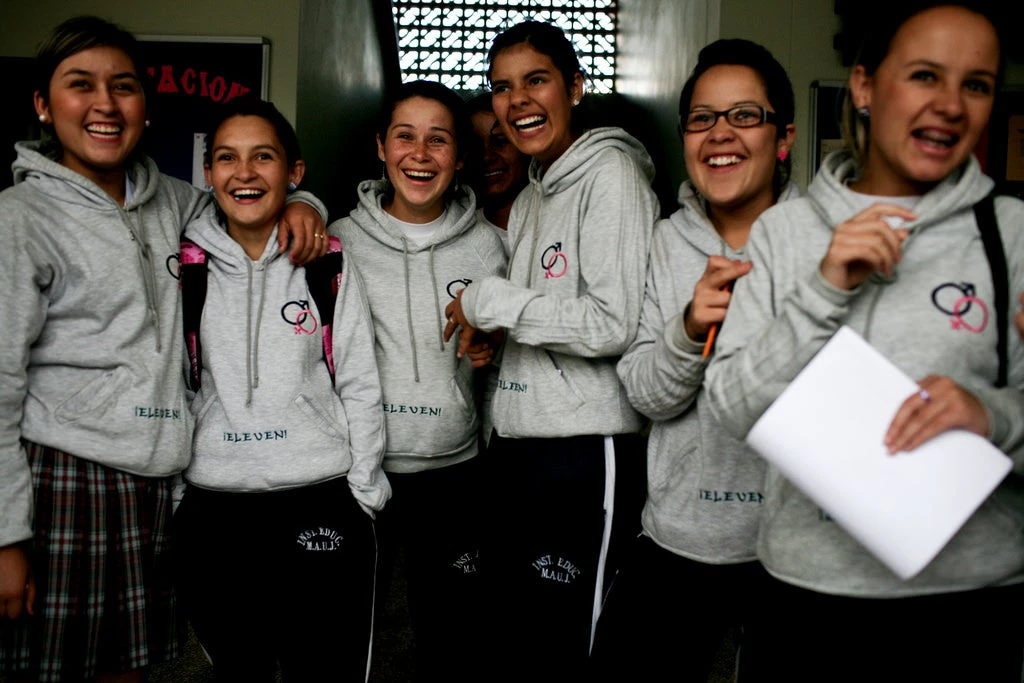
“If you invest in a girl, she becomes a woman and she invests in everyone else.”
Melinda Gates delivered this call to action from the World Bank/IMF Spring Meetings in April 2017. World Bank President Jim Yong Kim echoed her sentiments.
He told finance ministers present at the Meetings: invest more in your people, especially adolescents, and especially in girls. You will not be able to compete in the economy of the future if you don’t. He also called for action to invest in adolescent health and education, saying that these were crucial for building future workforces and harnessing the demographic dividend to capture the potential of shifts in working age populations to contribute to economic growth.
130 million girls are out-of-school today. Across the world, barriers persist that keep girls out of school: early marriage, affordability, and safety, to name a few. As Saba Ismail, founder of Aware Girls in Pakistan, highlighted, secondary schools are often a long distance from home and require long commutes by foot. In many parts of the world, travel to school is unsafe for girls. She said that, by eliminating the need for girls to walk long distances to school, such as through the provision of bicycles, girls’ secondary school enrollment can increase by 30 percent. Providing scholarships or cash transfers to families to send their girls to school can similarly increase girls’ secondary school enrollment and attendance by up to 30 percent.
Evidence shows that the average rate of return is 10 percent for each additional year of schooling, with returns highest in low and middle-income countries, and with women experiencing higher returns to education than men at primary, secondary, and tertiary levels. Focusing on adolescent girls has reverberating impacts for girls, her family, and her community: If all girls completed 12 years of education, child marriage rates would drop by 64 percent.
Partnership
We at the World Bank and our development partners are building and broadening an evidence base on what works. President Kim’s call to action to invest in adolescents underscores the WBG’s investments in adolescent girls, including the five-year $ 2.5 billion commitment to education projects targeting adolescent girls announced last year.
A key ingredient to empowering girls through education rests at the local level. Involving girls and their families is the first step to sustainable change, as Claver Gatete, Rwanda’s Minister of Finance, noted.
Local solutions
In Rwanda, at the primary level, girls outnumber boys, in large part because policy-makers have “changed mentalities” in communities to ensure women and men have an equal voice, which is then continued through the school system, and has a ripple effect through jobs.
Mozambique has taken an approach of surveying adolescent girls, working with communities, and offering school-based services to empower adolescent girls as agents of change.
We’re encouraging new solutions to tackle the long-standing issue of out-of-school girls. In districts of Balochistan Province, Pakistan, where girls were out of school because of safety concerns and long distances, the World Bank supported a government-implemented, community-driven process to identify and address the barriers to girls’ education, including rebuilding girls’ schools that were previously shelter-less, hiring female teachers from the community, and setting up new schools in villages where access was a barrier; bringing school to girls where girls could not go to school.
When girls are not in school, they are less likely to be empowered to make decisions over their own lives. They are unable to unlock their economic potential, which effectively limits the potential of half the population. When governments prioritize girls’ education, they prioritize lifting the economic potential of their nation.
As Marie-Claude Bibeau, the Minister of International Development from Canada remarked, the prerogative is to invest in girls and women. “Give them the opportunity to develop their full potential. It is an investment, not an expense.”
Follow the World Bank Group Education team on Twitter @wbg_education.


Join the Conversation